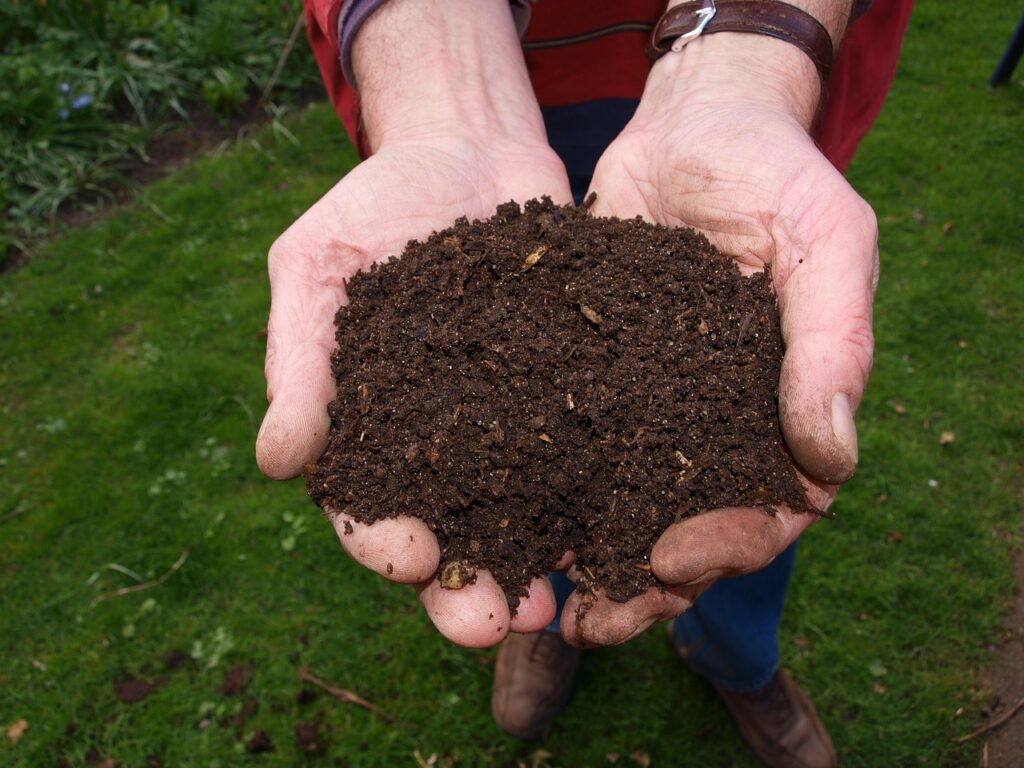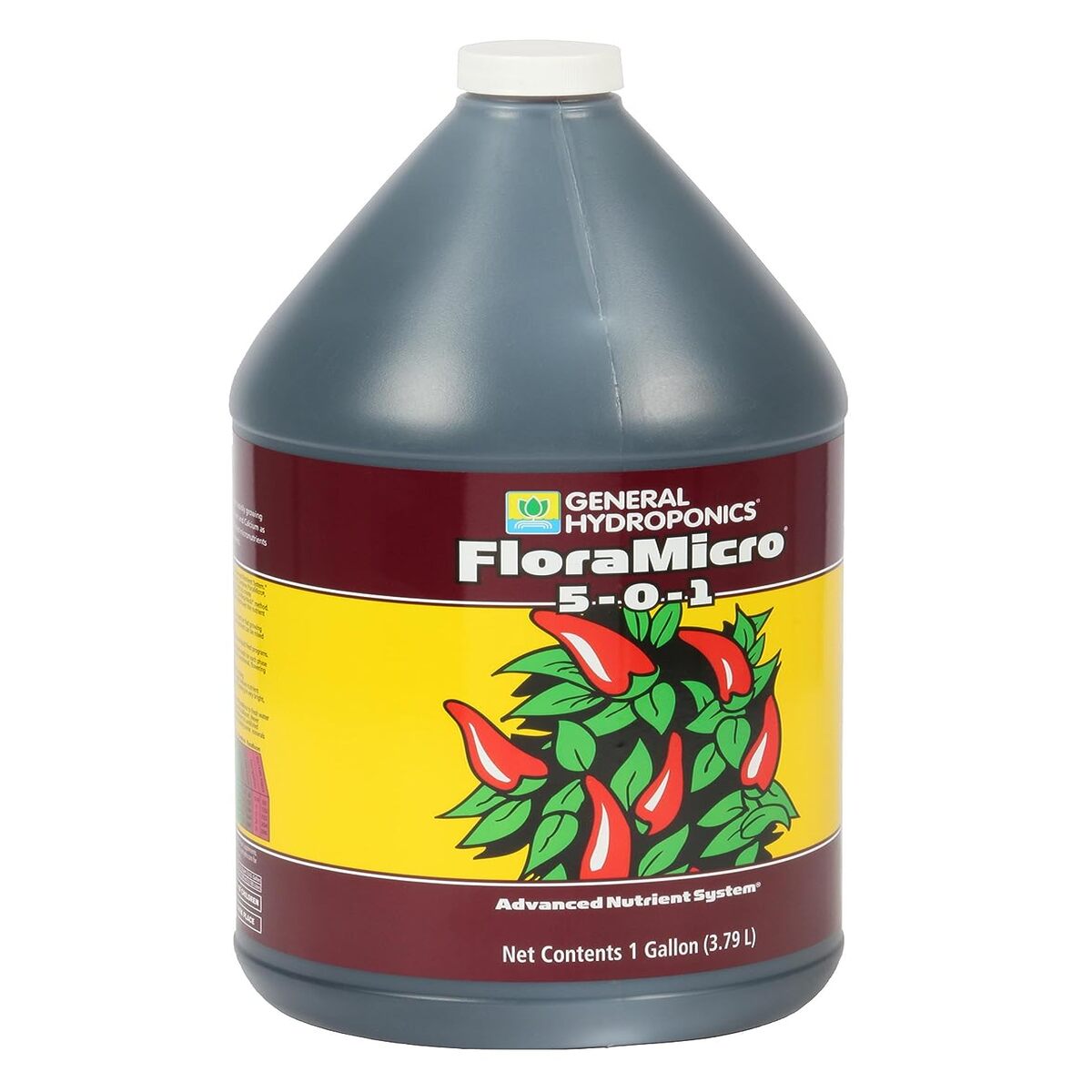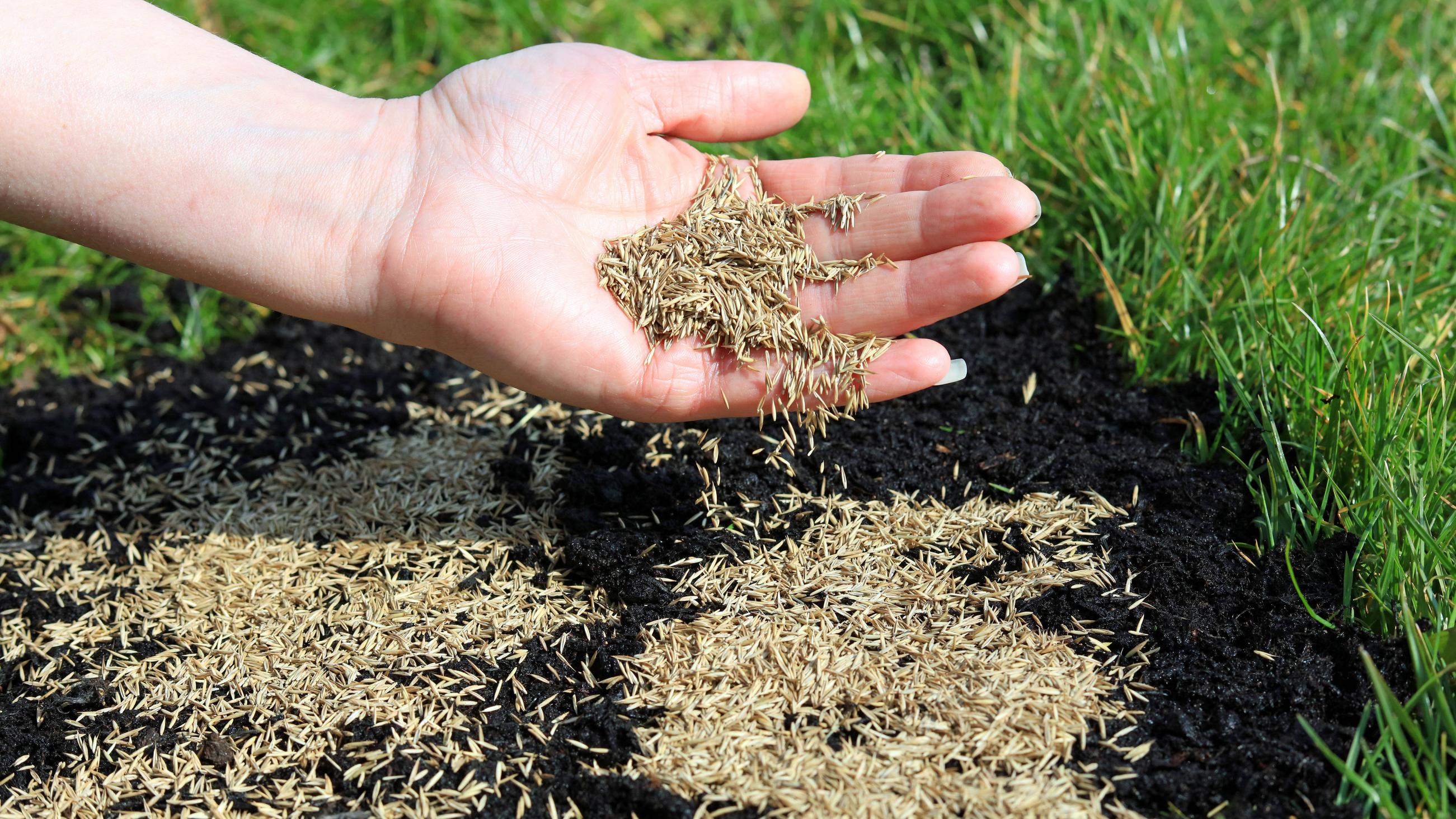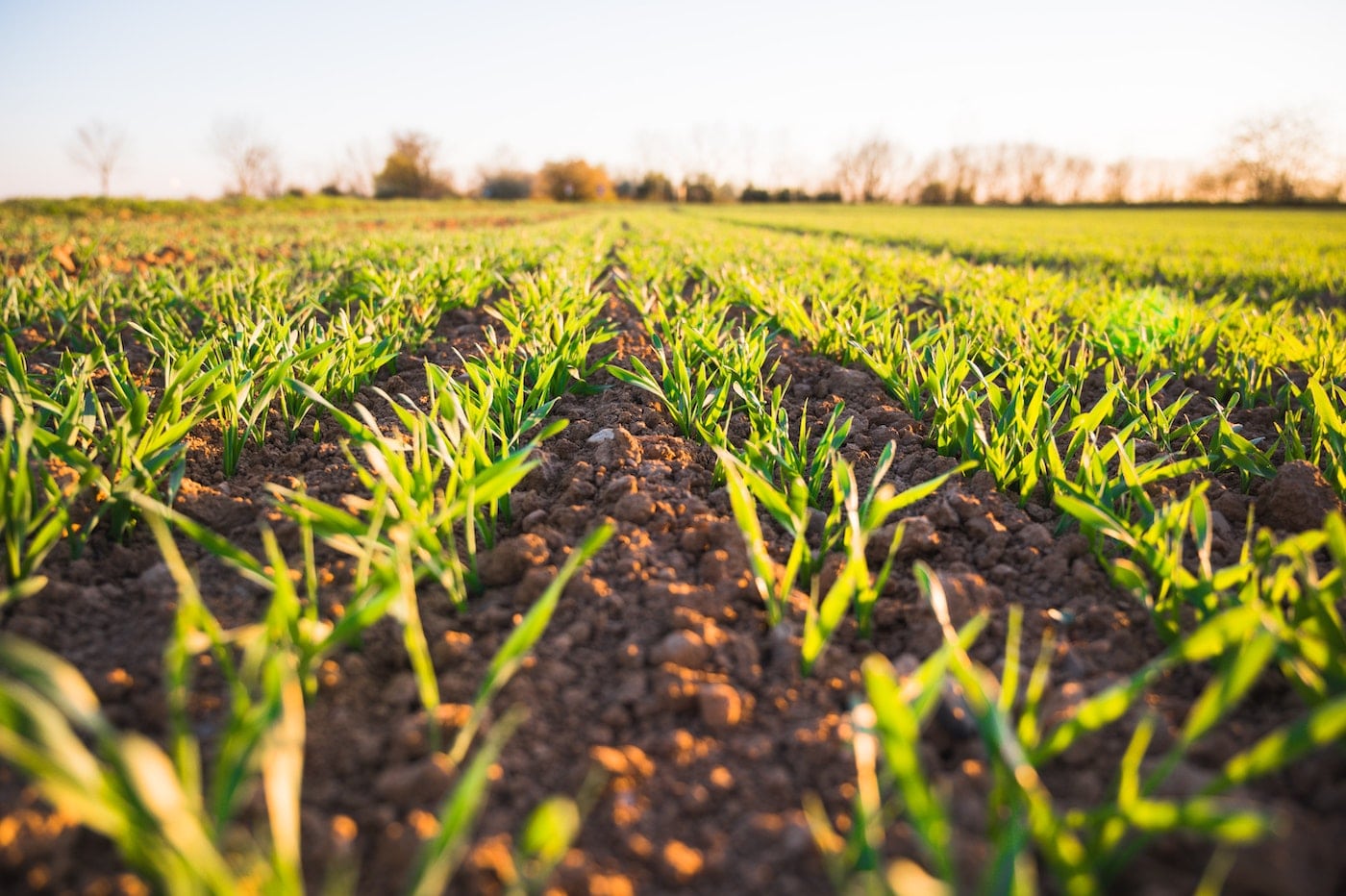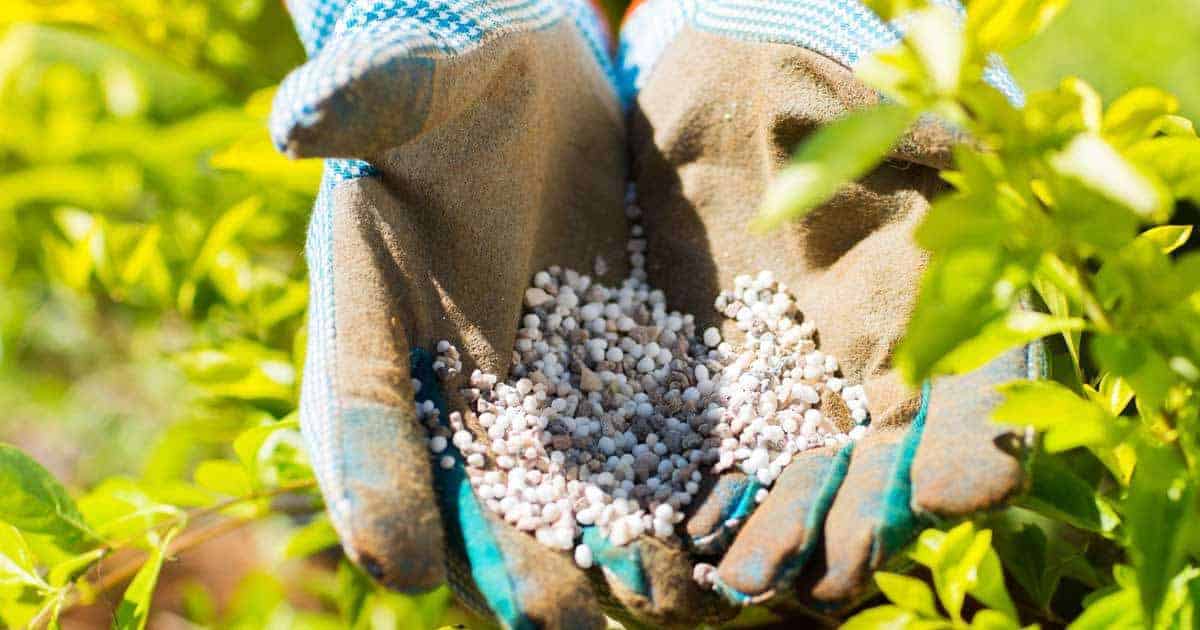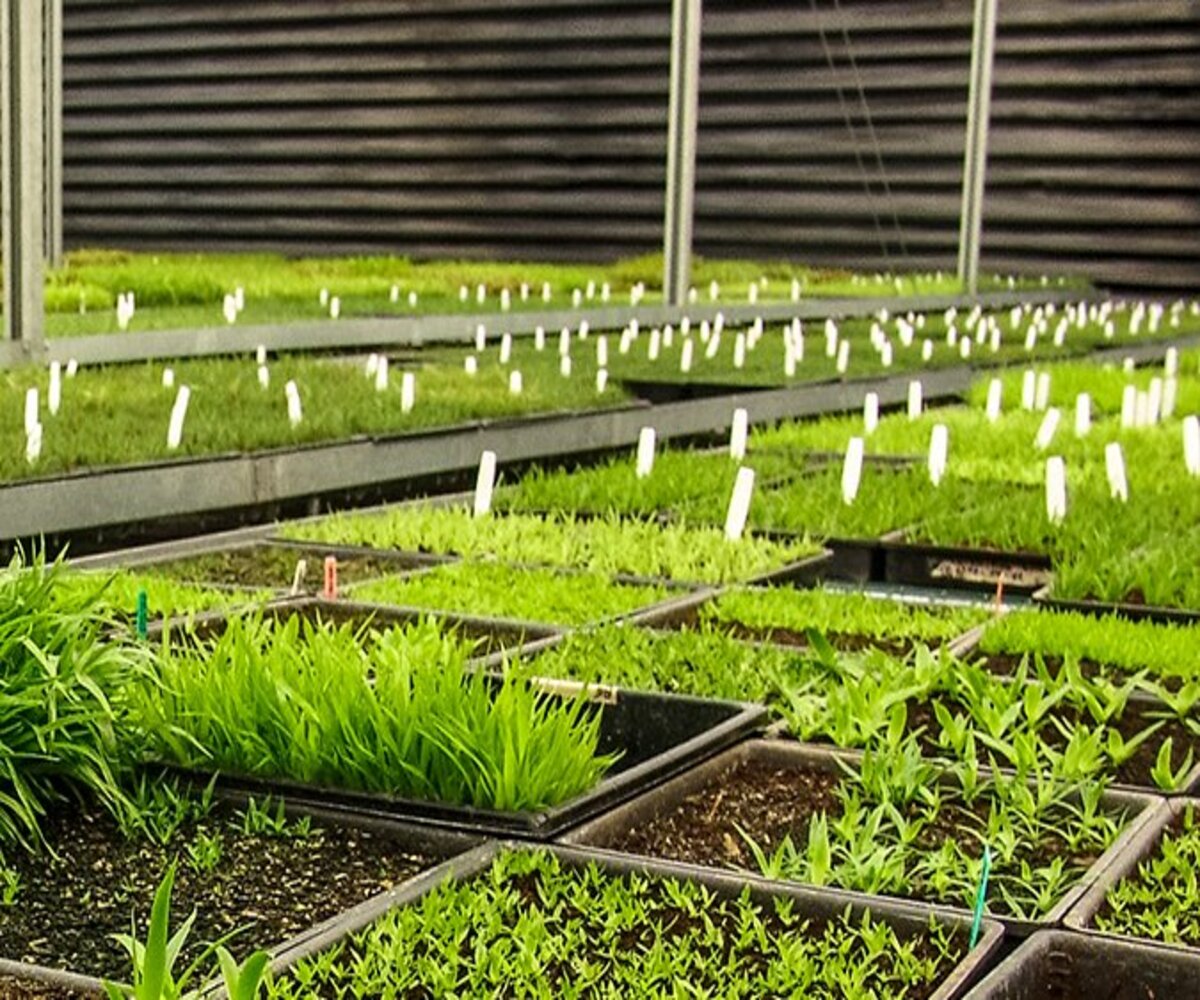Home>Gardening News and Trends>What Fertilizer To Use After Overseeding


Gardening News and Trends
What Fertilizer To Use After Overseeding
Modified: January 22, 2024
Discover the latest news on what fertilizer to use after overseeding. Enhance your lawn's growth with the best products for optimal results.
(Many of the links in this article redirect to a specific reviewed product. Your purchase of these products through affiliate links helps to generate commission for Chicagolandgardening.com, at no extra cost. Learn more)
Table of Contents
- Introduction
- Understanding the Importance of Fertilizing after Overseeding
- Factors to Consider when Choosing the Right Fertilizer
- Best Fertilizers for Overseeded Lawns
- Organic Fertilizer Options for Overseeded Lawns
- How to Apply Fertilizer after Overseeding
- Tips for Maximizing Fertilizer Effectiveness in Overseeded Lawns
- Common Mistakes to Avoid when Fertilizing after Overseeding
- Conclusion
Introduction
Overseeding is a crucial step in maintaining a healthy and vibrant lawn. It involves spreading grass seed over an existing lawn to fill in thin or bare areas, improve density, and enhance the overall appearance of the turf. While overseeding plays a significant role in rejuvenating the grass, ensuring proper fertilization after overseeding is equally important.
When you overseed your lawn, the new grass seeds require essential nutrients to germinate, establish roots, and grow into lush, green blades. Fertilizing after overseeding helps provide these necessary nutrients, giving your lawn the best chance to thrive and flourish.
Choosing the right fertilizer for your overseeded lawn depends on several factors, including the type of grass, soil conditions, climate, and specific nutrient requirements. By understanding these factors and selecting the appropriate fertilizer, you can support the growth and development of your newly seeded grass, resulting in a lush and healthy lawn.
Not all fertilizers are created equal, and different formulations offer varying benefits to your lawn. While synthetic fertilizers are commonly used for their rapid results, organic fertilizers provide a more sustainable and environmentally friendly approach. It is important to consider your preferences, as well as the unique needs of your lawn when deciding between synthetic and organic fertilizers.
In this article, we will delve into the importance of fertilizing after overseeding, factors to consider when choosing the right fertilizer, and provide recommendations for the best fertilizers for overseeded lawns. We will also discuss organic fertilizer options for those looking for a more natural approach. Additionally, we will provide tips on how to apply fertilizer after overseeding and common mistakes to avoid to ensure you get the best possible results for your newly seeded lawn. Let us dive into the details and discover how to give your overseeded lawn the nutrients it needs to thrive!
Understanding the Importance of Fertilizing after Overseeding
Fertilizing after overseeding is a crucial step in the success of your lawn’s revival. When you overseed, you introduce new grass seeds into the existing turf, with the goal of filling in sparse or patchy areas. These newly seeded grasses require an ample supply of nutrients to establish roots, grow vigorously, and compete with existing vegetation.
One of the primary benefits of fertilizing after overseeding is providing the essential nutrients that the grass seeds need to germinate and develop into healthy plants. Fertilizers are typically rich in nitrogen (N), phosphorus (P), and potassium (K), also known as NPK. Nitrogen promotes lush green growth, phosphorus supports root development, and potassium enhances overall plant health and resilience.
Fertilizing after overseeding ensures that the newly seeded grass has access to these vital nutrients, which may be lacking in the existing soil. By providing the right balance of NPK, you give the grass seeds a head start in establishing a strong root system and generating healthy, vibrant blades of grass.
The timing of fertilization after overseeding is crucial. It is recommended to wait until the new grass seedlings have germinated and developed their first set of true leaves, usually around four to six weeks after overseeding. Applying fertilizer too early can potentially harm the delicate seedlings, while delaying fertilization for too long may deprive the young grass of the necessary nutrients it needs to thrive.
In addition to supplying nutrients, fertilizing after overseeding also aids in minimizing weed competition. When you overseed, the new grass seeds need to compete with existing weeds for space, sunlight, and nutrients. By providing the grass with the necessary nutrients, you help it establish a strong root system and grow rapidly, outcompeting weeds and reducing their chances of taking over your lawn.
Furthermore, fertilizing after overseeding contributes to the overall health and vigor of your lawn. Well-nourished grass can better withstand environmental stresses, such as drought, heat, and disease. It also improves the aesthetic appeal of your lawn, with dense, lush grass that creates a beautiful and inviting outdoor space.
Fertilizing after overseeding is a crucial step in the revitalization of your lawn. By providing the necessary nutrients, you give the newly seeded grass the best chance to thrive, outcompete weeds, and create a healthy and vibrant lawn. In the next section, we will explore the key factors to consider when choosing the right fertilizer for your overseeded lawn.
Factors to Consider when Choosing the Right Fertilizer
Choosing the right fertilizer for your overseeded lawn is crucial to providing the necessary nutrients for optimal growth and development. Here are some key factors to consider when selecting the right fertilizer:
- Soil Analysis: Conducting a soil test is a good starting point to determine the nutrient levels in your soil. The results will help you identify any deficiencies and guide you in choosing a fertilizer with the appropriate nutrient ratio.
- Nutrient Ratio: Fertilizers are typically labeled with three numbers, indicating the ratio of nitrogen (N), phosphorus (P), and potassium (K), respectively. Understanding the specific nutrient needs of your grass species and the recommendations from the soil test will help you choose a fertilizer with the right ratio to promote healthy growth.
- Granular or Liquid: Fertilizers come in both granular and liquid forms. Granular fertilizers are easier to apply and provide a slow-release of nutrients over time. On the other hand, liquid fertilizers offer faster absorption and are suitable for quick nutrient boosts. Consider your preference, lawn size, and the specific needs of your overseeded grass when deciding between these two options.
- Synthetic or Organic: Synthetic fertilizers are chemically formulated and deliver nutrients more quickly. They are often cheaper and provide rapid results. However, organic fertilizers, derived from natural sources, offer a more sustainable and environmentally-friendly option. They provide slow-release nutrients and improve soil health over time.
- Slow-release vs. Quick-release: Slow-release fertilizers release nutrients gradually over an extended period, requiring fewer applications and reducing the risk of burn. Quick-release fertilizers, on the other hand, offer a rapid nutrient boost but require more frequent applications.
- Climate and Season: Consider the climate and the time of year when choosing a fertilizer. Different grass species have varying nutrient requirements, and seasonal fertilization adjustments may be necessary. For example, cold-season grasses may benefit from a fall fertilizer application to support root growth before winter dormancy.
By considering these factors, you can narrow down your options and choose a fertilizer that best suits the needs of your overseeded lawn. In the following section, we will explore some of the best fertilizers specifically designed for overseeded lawns to help you make an informed decision.
Best Fertilizers for Overseeded Lawns
Choosing the right fertilizer for a newly overseeded lawn is crucial for providing the necessary nutrients to support healthy growth. Here are some of the best fertilizers specifically formulated for overseeded lawns:
- Scotts Turf Builder Starter Food for New Grass: This popular brand offers a specific formulation designed to promote strong root development in newly seeded lawns. It contains a high phosphorus content, which encourages root growth, and a slow-release nitrogen component for sustained nourishment.
- Pennington Smart Seed Starter Fertilizer: Designed to be used with Pennington Smart Seed, this fertilizer provides a balanced blend of nutrients to support successful seed germination. It also includes mycorrhizae, beneficial fungi that assist with nutrient uptake, resulting in healthier and more robust grass plants.
- Jonathan Green New Seeding Lawn Fertilizer: This premium fertilizer is designed specifically for newly seeded lawns. It contains a high phosphorus content to encourage root development and rapid establishment. With a slow-release nitrogen component, it ensures sustained feeding for several weeks.
- Simple Lawn Solutions Starter Fertilizer: This fertilizer is packed with essential nutrients to support strong root development and establish a healthy foundation for new grass. It includes a balanced NPK ratio and is suitable for both cool-season and warm-season grasses.
- Lesco Starter Fertilizer: Known for its superior quality, Lesco Starter Fertilizer is an excellent choice for overseeded lawns. With a high phosphorus content, it promotes vigorous root growth and provides the essential nutrients needed for newly seeded grass to thrive.
When applying these fertilizers, follow the recommended application rates and watering instructions provided on the packaging. Remember, consistency in application is key to ensuring that your overseeded lawn receives the necessary nutrients for optimal growth.
Although these fertilizers are specifically formulated for overseeded lawns, it is always beneficial to conduct a soil test to determine any nutrient deficiencies and customize your fertilization program accordingly. In the next section, we will explore organic fertilizer options for those who prefer a more natural and sustainable approach to lawn care.
Organic Fertilizer Options for Overseeded Lawns
For those who prefer a more natural and environmentally-friendly approach to lawn care, there are several organic fertilizers available that provide the necessary nutrients for overseeded lawns. Here are some organic fertilizer options to consider:
- Milorganite: Made from heat-dried microbes and organic matter, Milorganite is a popular organic fertilizer choice. It contains a balanced nutrient ratio and slowly releases nitrogen, phosphorus, and potassium over time. It also encourages beneficial microbial activity in the soil, promoting overall soil health.
- Espoma Organic Lawn Starter: This organic fertilizer is specifically formulated for new seedlings, making it ideal for overseeded lawns. It contains a high phosphorus content to support root development and includes beneficial microbes to enhance nutrient absorption. Espoma Organic Lawn Starter is also enriched with natural ingredients like bone meal and poultry manure.
- Ringer Lawn Restore: Ringer Lawn Restore is an organic fertilizer that provides a slow-release blend of essential nutrients. It is derived from ingredients such as soybean meal, feather meal, and potassium sulfate. This fertilizer not only nourishes the grass but also promotes microbial activity and helps break down thatch layers in the soil.
- Dr. Earth Organic Super Natural Lawn Fertilizer: This organic fertilizer is enriched with natural ingredients to provide the essential nutrients needed for overseeded lawns. It consists of a blend of fish bone meal, alfalfa meal, and seaweed extract, among other organic ingredients. It promotes strong root development and enhances soil fertility and overall lawn health.
- Jobe’s Organics Lawn Fertilizer: Jobe’s Organics offers a granular lawn fertilizer made from plant-based materials and beneficial microbes. It provides slow-release nutrients to feed the grass gradually and improve soil health. This organic fertilizer is eco-friendly and safe for pets and children.
Organic fertilizers are generally more sustainable and environmentally friendly, as they are derived from natural sources and promote soil health. They also reduce the risk of chemical runoff that can harm water sources and ecosystems. When using organic fertilizers, remember to follow the application instructions on the packaging and be mindful of any specific requirements for overseeded lawns.
It’s important to note that organic fertilizers may take longer to produce visible results compared to synthetic fertilizers. However, they offer long-term benefits for soil health and the overall sustainability of your lawn. In the next section, we will discuss how to apply fertilizer after overseeding to ensure proper nutrient absorption and promote successful grass growth.
How to Apply Fertilizer after Overseeding
Applying fertilizer after overseeding is a critical step in providing the essential nutrients for the newly seeded grass to thrive. Here are the steps to follow when applying fertilizer to an overseeded lawn:
- Read the Instructions: Start by carefully reading and understanding the instructions on the fertilizer packaging. Each fertilizer may have specific guidelines and recommendations for application rates, timing, and watering requirements.
- Timing is Key: It is important to time the application of fertilizer correctly. Wait until the new grass seedlings have germinated and developed their first set of true leaves, which typically takes about four to six weeks after overseeding. Applying fertilizer too early can potentially harm the delicate seedlings, while delaying it for too long may deprive the young grass of the necessary nutrients it needs to establish.
- Follow Application Rates: Use a spreader to ensure an even distribution of the fertilizer over the entire lawn. Follow the recommended application rates provided on the fertilizer packaging. Applying too little fertilizer may not provide enough nutrients, while applying too much can lead to fertilizer burn and damage to the grass.
- Overlap the Seeding Areas: Pay special attention to overlapping the fertilizer application in the areas where the grass seed was spread during overseeding. This ensures that the newly germinated seedlings receive an adequate amount of nutrients for healthy growth and reduces the risk of uneven grass development.
- Watering: After applying the fertilizer, thoroughly water the lawn. This helps activate the fertilizer, allowing the nutrients to penetrate into the soil and reach the grass roots. It is essential to follow the watering guidelines provided on the fertilizer packaging to avoid over or under-watering.
- Repeat Application: Depending on the fertilizer type and specific recommendations, you may need to repeat the fertilization process. Some fertilizers require multiple applications throughout the growing season, while others provide sustained feeding in a single application. Follow the instructions to ensure the proper feeding schedule for your overseeded lawn.
By following these steps, you can ensure that your overseeded lawn receives the proper amount of nutrients at the right time, supporting healthy growth and development of the newly seeded grass. In the next section, we will provide tips for maximizing the effectiveness of fertilizer in overseeded lawns.
Tips for Maximizing Fertilizer Effectiveness in Overseeded Lawns
Maximizing the effectiveness of fertilizer in overseeded lawns is crucial for promoting healthy growth and achieving the desired results. Here are some helpful tips to ensure you get the most out of your fertilizer application:
- Timing is Everything: Apply the fertilizer at the recommended time after overseeding, typically around four to six weeks. Applying it too early may damage the delicate seedlings, while delaying the application may deprive the newly germinated grass of essential nutrients.
- Follow Proper Application Rates: Pay attention to the recommended application rates specified on the fertilizer packaging. Applying too much fertilizer can lead to burn and damage the lawn, while using too little may not provide enough nutrients for optimal growth. Following the instructions ensures the correct nutrient balance for your overseeded lawn.
- Water Properly: Proper watering is crucial after applying fertilizer. Water the lawn immediately after application to initiate the release of nutrients and help them penetrate into the soil. Follow the watering guidelines provided on the fertilizer packaging to ensure adequate hydration and nutrient absorption.
- Mow at the Recommended Height: Maintain the proper mowing height for your grass species. Regularly mowing at the recommended height helps to promote healthy growth, prevents weed competition, and allows sunlight and nutrients to reach the newly seeded grass.
- Mulching Can Help: Consider leaving grass clippings on the lawn after mowing, as they act as a natural mulch and provide some additional nutrients to the grass. This can supplement the fertilization process and contribute to the overall health of the overseeded lawn.
- Monitor and Adjust: Keep a close eye on the progress of your overseeded lawn after fertilization. Observe the growth and health of the grass, as well as any changes in color and density. This allows you to make necessary adjustments in terms of watering, mowing, and additional fertilization if needed.
- Stick to a Regular Maintenance Schedule: Consistency in lawn care is key to achieving and maintaining a healthy overseeded lawn. Follow a regular maintenance schedule that includes proper watering, mowing, and fertilization. This helps provide a consistent supply of nutrients and promotes even growth across the entire lawn.
By following these tips, you can maximize the effectiveness of the fertilizer and achieve the best possible results for your overseeded lawn. Now that you have a good understanding of how to optimize fertilization, let’s take a look at some common mistakes to avoid when fertilizing after overseeding.
Common Mistakes to Avoid when Fertilizing after Overseeding
When fertilizing after overseeding, it’s important to avoid some common mistakes that can hinder the success of your lawn’s growth and health. Here are some mistakes to steer clear of:
- Overfertilization: Applying too much fertilizer can burn the grass and cause damage. Follow the recommended application rates specified on the fertilizer packaging to ensure you provide the optimal amount of nutrients. More is not always better when it comes to fertilization.
- Underfertilization: Conversely, underapplying fertilizer may not provide enough nutrients for the newly seeded grass to thrive. Be sure to follow the recommended rates and give your lawn the right amount of nourishment it needs to grow strong and healthy.
- Inadequate Watering: Proper watering is crucial after fertilization. Not watering enough or watering too much can affect nutrient absorption and result in uneven growth. Follow the watering guidelines provided with the fertilizer to ensure the nutrients are properly activated.
- Poor Timing: Timing is essential when it comes to fertilizing after overseeding. Applying fertilizer too early can damage delicate seedlings, while applying it too late may deprive the newly germinated grass of needed nutrients. Follow the recommended timeline for applying fertilizer after overseeding for best results.
- Incorrect Spreader Calibration: Using a spreader to apply fertilizer ensures even distribution across the lawn. However, if the spreader is not properly calibrated, it can lead to uneven application and patchy results. Take the time to calibrate your spreader according to the manufacturer’s instructions to ensure accurate and consistent coverage.
- Not Considering Soil Conditions: Understanding the soil conditions of your lawn is important for choosing the right fertilizer. Conduct a soil test to determine any nutrient deficiencies or imbalances. This information will help you select the appropriate fertilizer that addresses the specific needs of your soil and grass.
- Neglecting Other Lawn Care Practices: Fertilizing is an important aspect of lawn care, but it is not the only factor that influences the health of your overseeded lawn. Proper watering, mowing at the correct height, and controlling weeds all play a role in the successful development of the grass. Neglecting these essential practices can hinder the overall results of overseeding and fertilization.
- Poor Product Choice: It’s essential to choose the right fertilizer for your overseeded lawn. Consider the grass type, climate, season, and specific nutrient requirements when making your selection. Choosing the wrong fertilizer can be ineffective or even harmful to your lawn.
By avoiding these common mistakes, you can ensure that your fertilization efforts after overseeding will promote healthy growth and help you achieve a lush and vibrant lawn. In the next section, we will conclude our discussion and summarize the key points covered in this article.
Conclusion
Fertilizing after overseeding is a crucial step in the rejuvenation and maintenance of a healthy and vibrant lawn. By providing the necessary nutrients to the newly seeded grass, you can promote strong root development, rapid growth, and overall lawn health. Choosing the right fertilizer based on factors such as soil analysis, nutrient ratio, and granular or organic preferences can optimize the effectiveness of fertilization.
There are various options for fertilizers specifically designed for overseeded lawns, including both synthetic and organic choices. Each has its own benefits, so it’s important to consider your preferences and the specific needs of your lawn. Applying the fertilizer at the right time, following proper application rates, and watering adequately are crucial steps for maximizing its effectiveness.
Avoiding common mistakes such as overfertilization, underfertilization, inadequate watering, and poor timing is key to achieving successful results. Consider other lawn care practices such as mowing at the correct height, controlling weeds, and conducting a soil analysis to ensure a comprehensive approach to lawn maintenance.
By implementing the tips and guidelines outlined in this article, you can nurture your overseeded lawn and enjoy the benefits of a lush, green, and healthy turf. Remember, proper fertilization is just one piece of the puzzle—consistent care and attention to other aspects of lawn maintenance are integral to the long-term success of your lawn.
So, armed with knowledge and these best practices, go forth and fertilize your overseeded lawn, creating a beautiful and inviting outdoor space for you and your family to enjoy.

